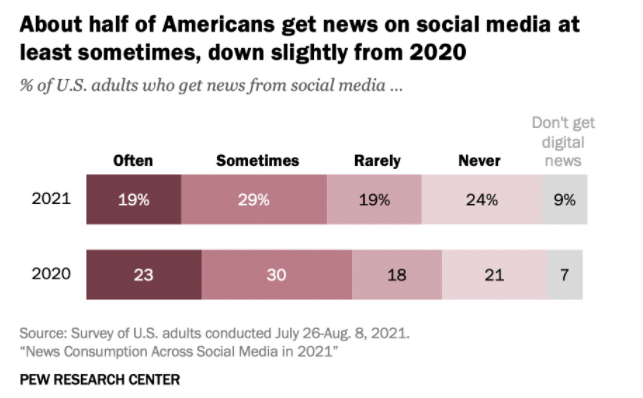Our compilation of the latest social media statistics of consumer adoption and usage of social networking platforms
Social networks have transformed marketing and, as this post shows, their popularity is still growing in our latest global social media statistics research summary for 2022.
Networks vary in popularity with different demographics and they’re still evolving. Research by Global WebIndex that we reference in this article shows that globally,
We’ll keep this post updated during 2022 as the latest statistics are published drawing on our recommended top 10 digital marketing statistics sources. We’ll be pointing to new data on the popularity of social media from Global Web Index (worldwide), Pew Internet Surveys (US) and OfCom (UK), and most recently the Datareportal October 2021 global snapshot.
- Q1. What is the overall popularity of social media compared to internet use globally?
- Q2. Which are the most popular social networks by demographics (age and gender)?
- Q3. Which are the fastest-growing social networks?
- Q4. How do social users interact with brands when selecting products and services?
- Q5. What are the different engagement metrics based on consumer behavior when using social media?
- Q6. How do consumers interact with different post formats in social media?
- Q7. What are the most popular times for consumers to use social media suggesting the best times to post?
Q1. What is the overall popularity of social media compared to internet use globally?
Datareportal regularly updates their massive global compendium of social media statistics, which gives some great insights into the world of social media. It’s a great download for including slides for your presentations. It’s particularly interesting how far some countries are diverging in terms of social media use, and surprising that Western Countries are lagging a fair way behind in adoption rates.

Some of the key takeaways from their October 2021 global snapshot are:
-
- More than half of the world now uses social media
- 4.55 billion people around the world now use social media, 400 million new users have come online within the last 12 months
- 5.29 billion unique mobile users means more than two-thirds of the world have access to a mobile phone
The full report from Datareportal contains a huge amount of insight collated from different data providers across 200+ slides. It provides country-specific data for the vast majority of the world, so you might want to check out the slides of the countries in your core markets to get a better idea of the current state of social in the areas you operate. In this post, we focus on the social media data which starts at slide 78 in the report.
This chart, by Datareportal, summarises the importance and growth of social media. A standout figure relevant to marketers from this chart is the 99 percent of total social media users accessing via mobile at some point.
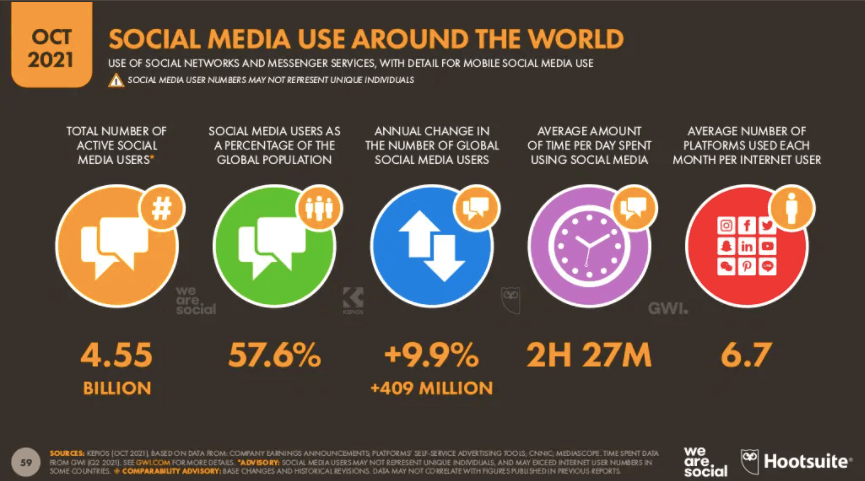
In his July 2021 summary video, Simon Kemp highlighted the changing use of media channels for the news. Now, more than 4 in 5 media internet users are using social media to access the news. Plus, 25.3% of 16-64 year olds have used the internet to check their health symptoms in the last week.
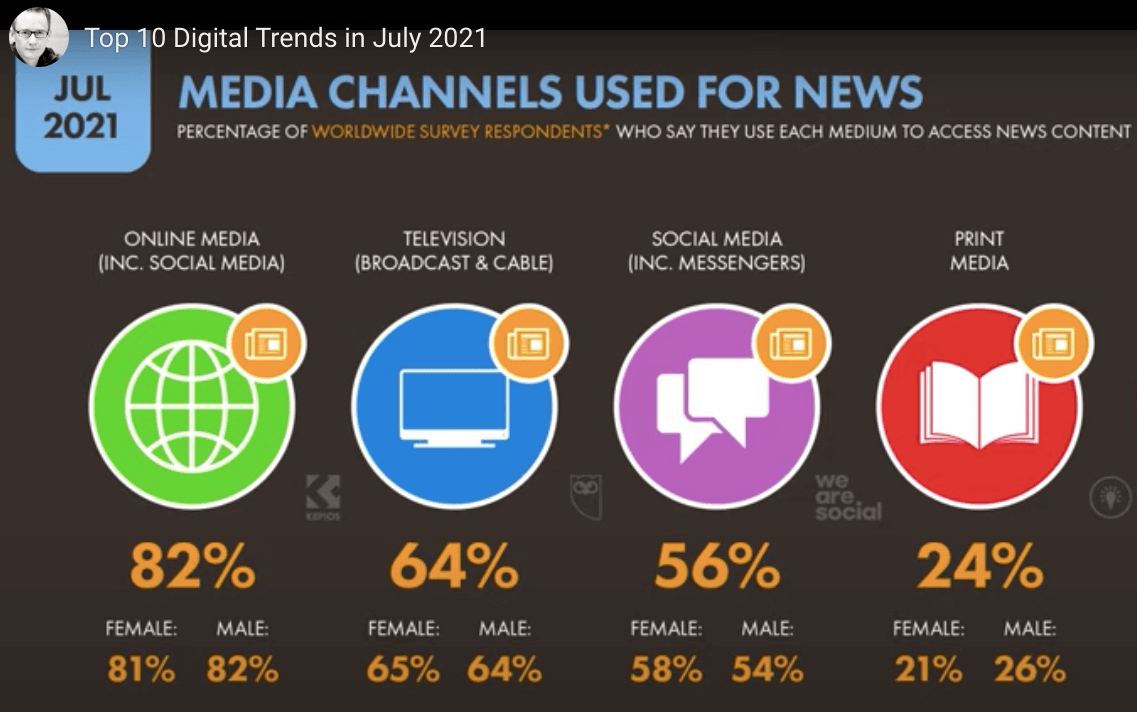
A summary of global social media users around the world
When comparing the most popular social networks it’s best to review them by active account usage, not just the number of user accounts.
This chart shows the total number of Internet users showing that whilst 61.8% of the world’s population are internet users, 4.2% are still not active social media users, which suggests opportunities for future growth.
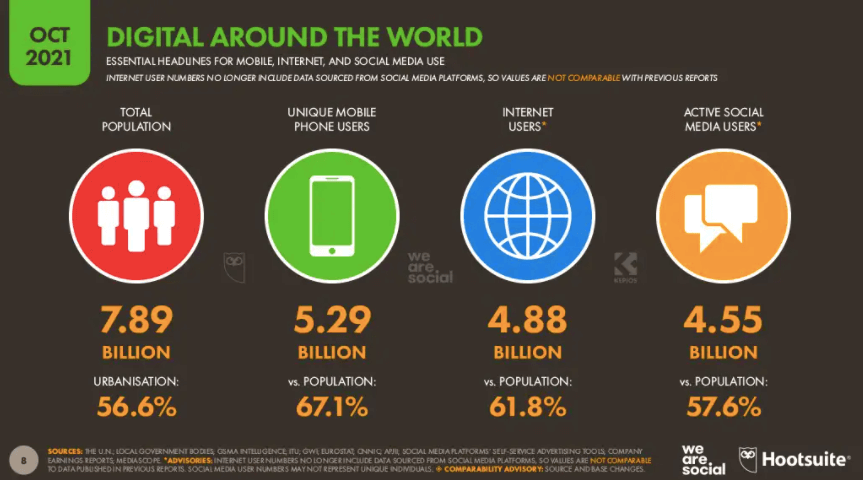
2021 analysis of regional use of social media shows the wide variation inactive social media penetration reaching 66% in Eastern Asia, 74% in North America, 72% in Southern America and 79% in both Northern and Western Europe falling to 31% in Southern Asia, 16% in Western Africa and 8% in Middle Africa.
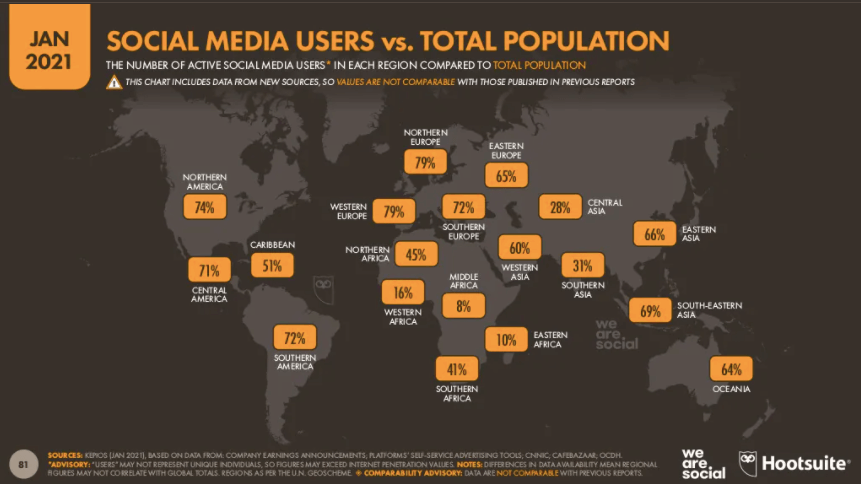
Pandemic marketing update
In addition to business as usual questions, a special report by Datareportal in July 2020, examines changes in social media usage during the beginning of the COVID-19 lockdown period. Notably a monumental increase in online and digital activities.
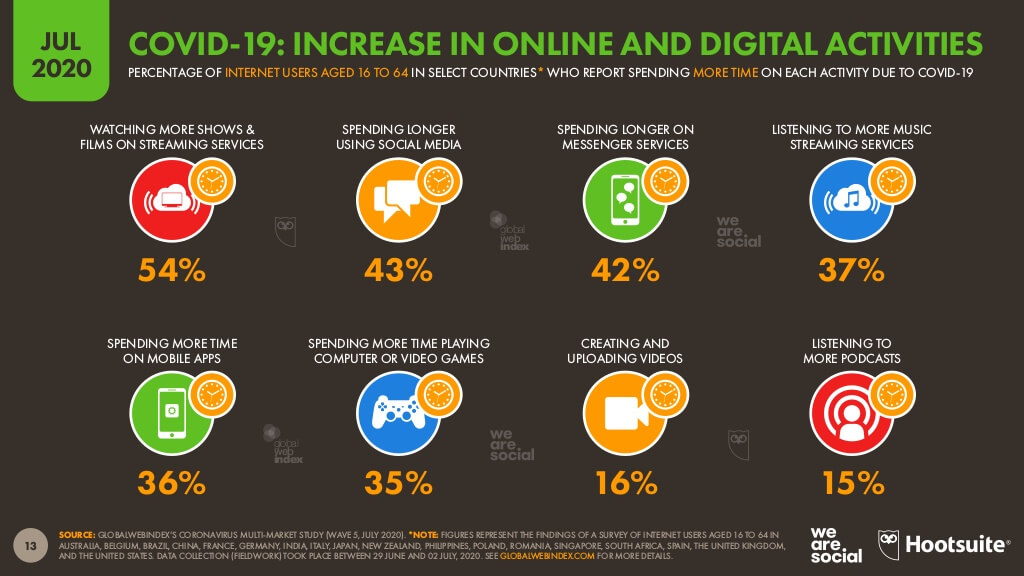
Q2. Which are the most popular social networks by demographics (age and gender)?
The best source for the most popular social media platforms statistics is direct from company statements and earning announcements.
This compilation shows the importance of messenger applications like WhatsApp, Facebook Messenger and WeChat. It also highlights the rapid growth of Tiktok to become one of the main social networks.
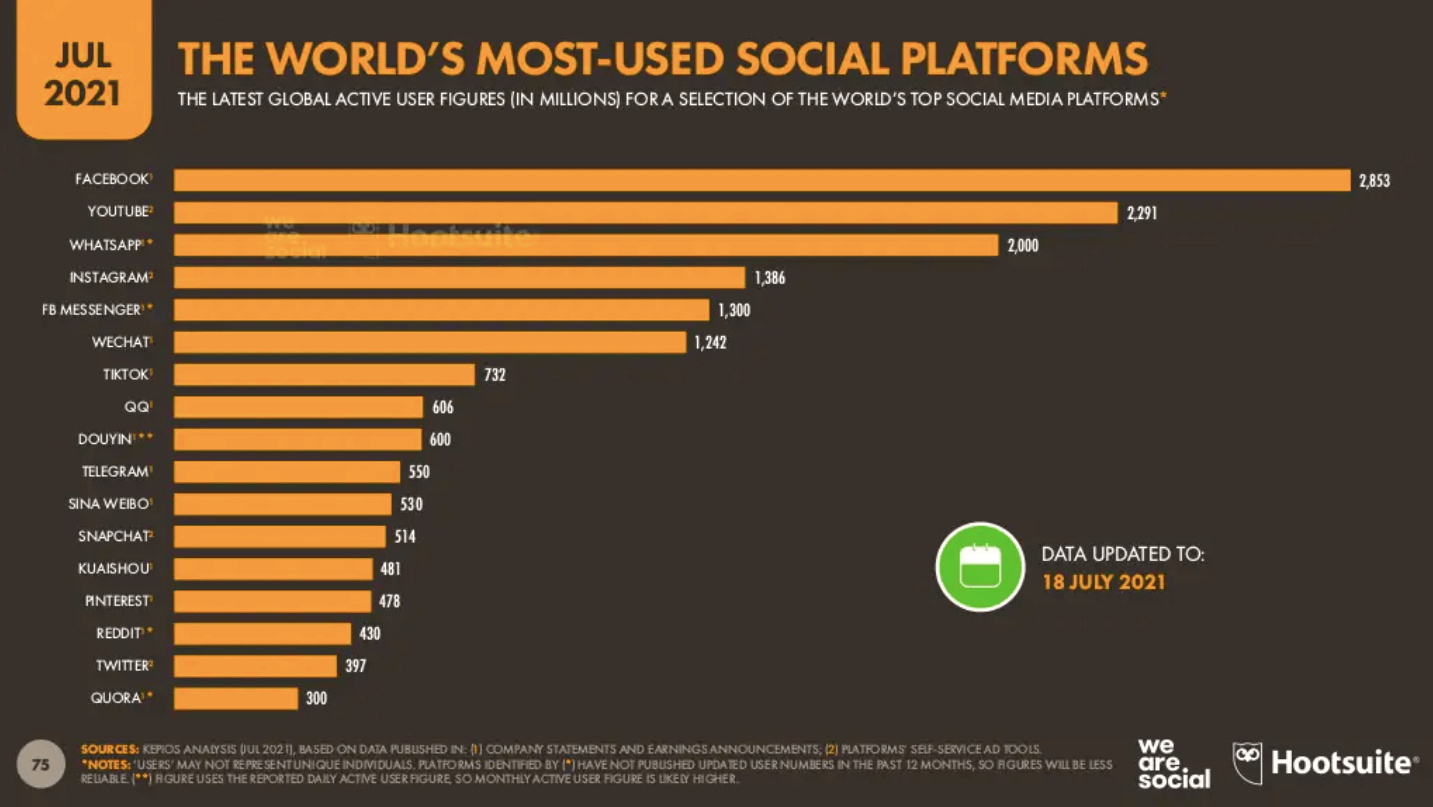
Note that Reddit, which is not discussed as much as Twitter has more monthly active users than Twitter and Quora. It has expanded its advertising programs recently and can be useful for reaching audiences and discussing activities such as gaming.
What does this mean for your social media marketing strategy? We’ve got templates and tools to support you and your marketing team to reach and convert more customers on social media. Apply a data-driven approach to create a winning marketing strategy. Find out more.

Create a social media strategy
Part of the Social media marketing Toolkit
Learn how to structure a social media strategy and translate it into practical actions to improve your goals
Global Facebook demographics
Since it is still the top dog, I’ll share the Facebook demographics from Sprout Social Media’s 2021 report. But you can get this breakdown for each channel and more in the report.
As we can see, from the Facebook data, the biggest demographic on Facebook is males aged 25-34. For females also this age range represents the largest user pool.
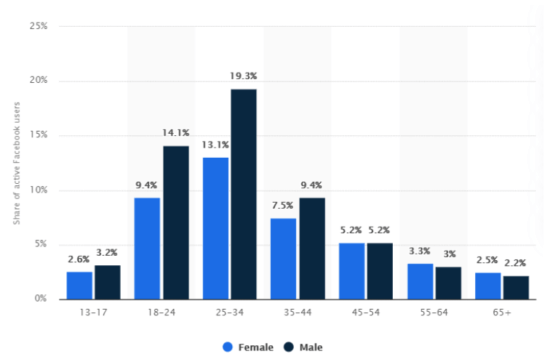
United States Social network popularity
The Pew Research Center news usage research is a very strong recent source showing US social media statistics trends in usage for news. Interestingly the number who ‘often’ get news from social media is down in 2021, but still, nearly half of those surveyed use social media to get news often or sometimes.
More interestingly, the stats breakdown below shows which social media channels are used by which genders, ages, education level, race, and political affiliations. For example, Facebook is a regular source of news to nearly double the amount of women to men. Nearly two thirds of Snapchat’s regular news consumers are aged 18-29.
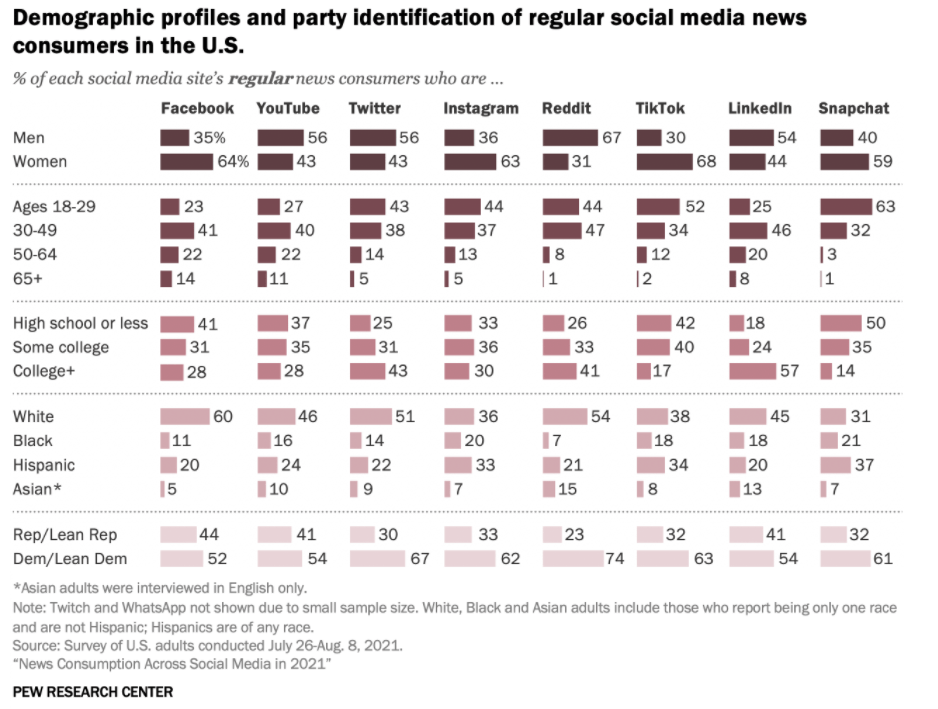
The 2021 Children and parents: media use and attitudes report published by OfCom (UK) is interesting if your business is involved in marketing to children or youth markets or you want to understand future adult use of social media. Notably, 44% of 8-11 year olds use social media apps/sites, swiftly increasing to 87% of 12-15 year olds.
Here’s a snapshot of two of the four age groups featured.
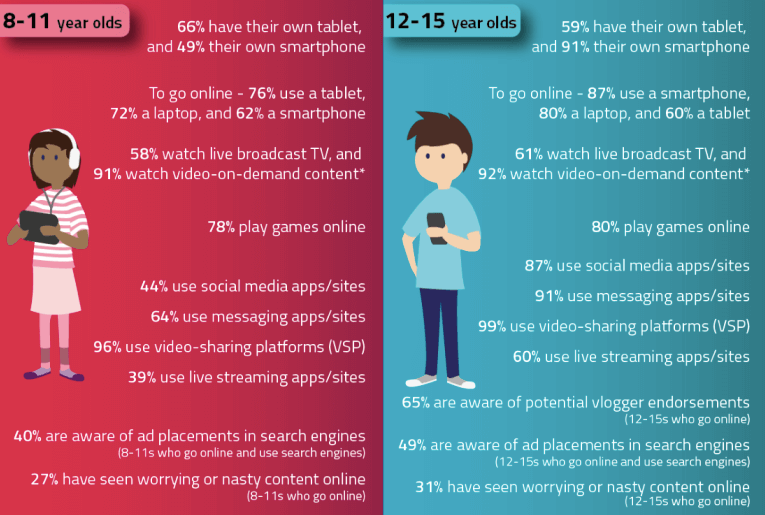
Q3. Which are the fast-growing social networks?
Every marketer has limited time for social media marketing, so which fastest growing social network should you focus your efforts on?
With the ‘Rise of Social media’ interactive tool from ‘Our World in Data’ you can see the growth of the main networks:
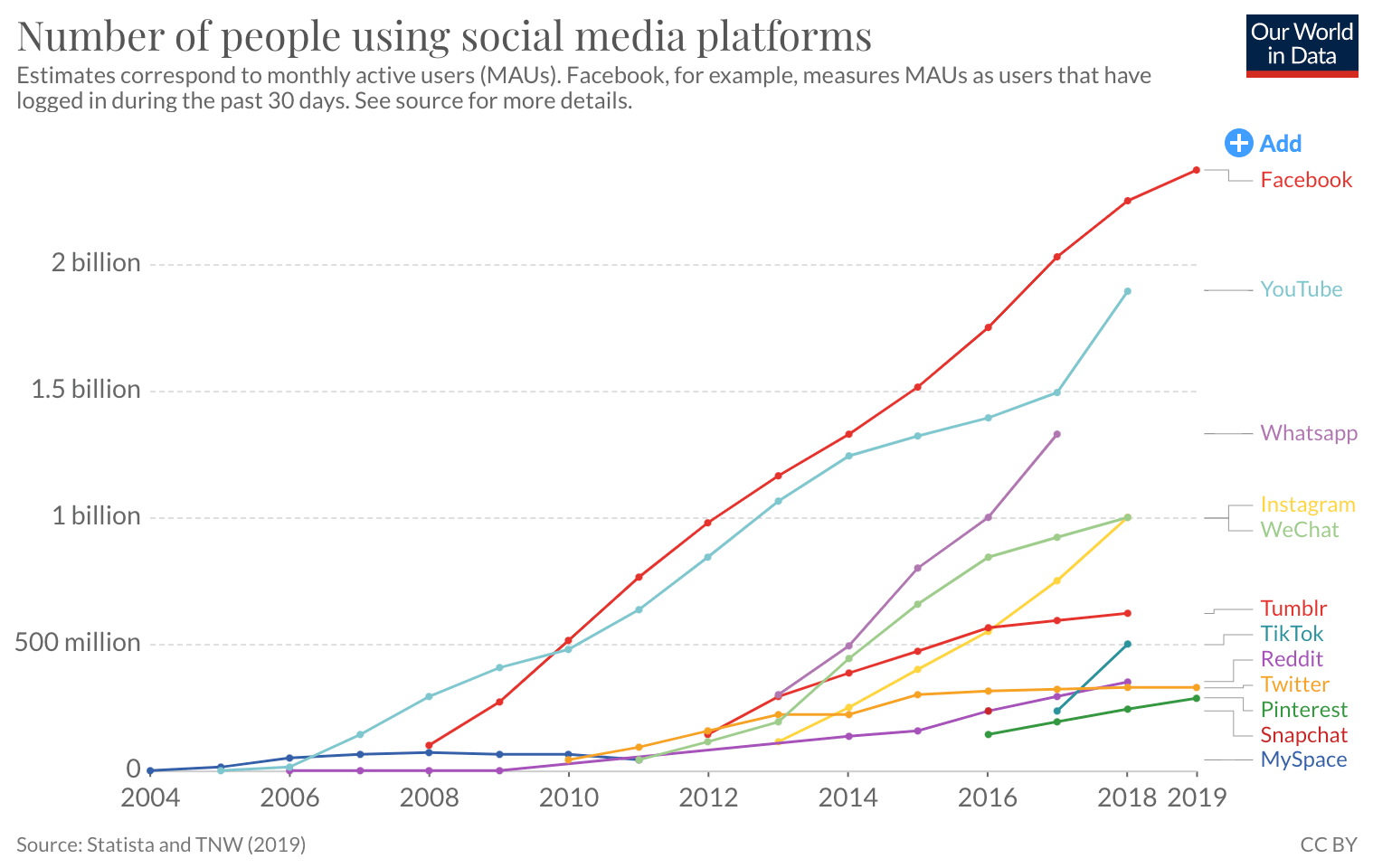
Q4. How do social users interact with brands when selecting products and services?
One of the challenges of social media marketing is that by its nature, social media are peer-to-peer, involving conversations between friends, families and colleagues. Given this, brands must be sensitive to how they use social media.
The research from GlobalWebIndex in their social media trends 2021 report shows how/why visitors use different social media services. Instagram, Pinterest, Linkedin, Reddit and Twitter users all report ‘follow/find information about products/brands’ in their top 3 motivations.
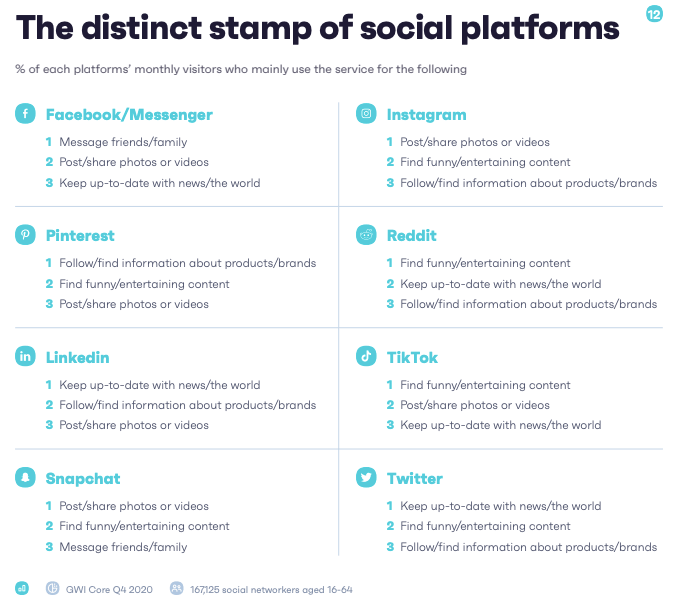
Q5. What are the benchmarks for different platforms engagement rates?
Between October – December 2020, digital consumers spent an average of 2 hours and 22 minutes per day on social networks and messaging apps according to Global Web Index. This constituted a slight decrease YOY – a trend that began in 2018 only to be interrupted by the Pandemic.
Latin America scored the highest social media usage in 2020, the peak of which, during the pandemic, saw a daily average of 3 hours 38 minutes on social media.
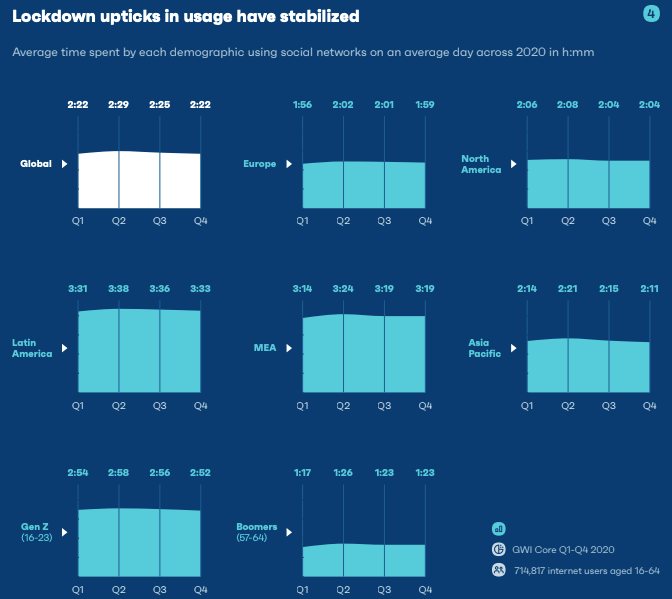
GWI explains that the growth in social media use is partly due to multi-networking which is a response to the widening choice of platform and it’s also being caused by a degree of specialization, where some users are turning to particular platforms to carry out certain types of networking behaviors such as Twitch, Pinterest, and TikTok.
What does this mean for your social media marketing strategy? Savvy Smart Insights members are utilizing our marketing training to master digital channels, whilst integrating their planning and marketing strategy. We’ve got marketing solutions to support you with your paid, owned and earned media and more. Get started today.
Global Facebook demographics
Since it is still the top dog, I’ll share the Facebook demographics from Sprout Social Media’s 2021 report. But you can get this breakdown for each channel and more in the report.
As we can see, from the Facebook data, the biggest demographic on Facebook is males aged 25-34. For females also this age range represents the largest user pool.

United States Social network popularity
The Pew Research Center news usage research is a very strong recent source showing US social media statistics trends in usage for news. Interestingly the number who ‘often’ get news from social media is down in 2021, but still, nearly half of those surveyed use social media to get news often or sometimes.
More interestingly, the stats breakdown below shows which social media channels are used by which genders, ages, education level, race, and political affiliations. For example, Facebook is a regular source of news to nearly double the amount of women to men. Nearly two thirds of Snapchat’s regular news consumers are aged 18-29.

The 2021 Children and parents: media use and attitudes report published by OfCom (UK) is interesting if your business is involved in marketing to children or youth markets or you want to understand future adult use of social media. Notably, 44% of 8-11 year olds use social media apps/sites, swiftly increasing to 87% of 12-15 year olds.
Here’s a snapshot of two of the four age groups featured.

Q3. Which are the fast-growing social networks?
Every marketer has limited time for social media marketing, so which fastest growing social network should you focus your efforts on?
With the ‘Rise of Social media’ interactive tool from ‘Our World in Data’ you can see the growth of the main networks:

Q4. How do social users interact with brands when selecting products and services?
One of the challenges of social media marketing is that by its nature, social media are peer-to-peer, involving conversations between friends, families and colleagues. Given this, brands must be sensitive to how they use social media.
The research from GlobalWebIndex in their social media trends 2021 report shows how/why visitors use different social media services. Instagram, Pinterest, Linkedin, Reddit and Twitter users all report ‘follow/find information about products/brands’ in their top 3 motivations.

Q5. What are the benchmarks for different platforms engagement rates?
Between October – December 2020, digital consumers spent an average of 2 hours and 22 minutes per day on social networks and messaging apps according to Global Web Index. This constituted a slight decrease YOY – a trend that began in 2018 only to be interrupted by the Pandemic.
Latin America scored the highest social media usage in 2020, the peak of which, during the pandemic, saw a daily average of 3 hours 38 minutes on social media.

GWI explains that the growth in social media use is partly due to multi-networking which is a response to the widening choice of platform and it’s also being caused by a degree of specialization, where some users are turning to particular platforms to carry out certain types of networking behaviors such as Twitch, Pinterest, and TikTok.
What does this mean for your social media marketing strategy? Savvy Smart Insights members are utilizing our marketing training to master digital channels, whilst integrating their planning and marketing strategy. We’ve got marketing solutions to support you with your paid, owned and earned media and more. Get started today.

Create a social media strategy
Part of the Social media marketing Toolkit
Learn how to structure a social media strategy and translate it into practical actions to improve your goals
Engagement by social network
Social media statistics benchmarking tool Rival IQ produces these useful sector-by-sector benchmarks of social media engagement metrics including:
- Posts per day
- Posts per week
- Engagement rate
- Top hashtags by engagement rate
These include useful sector benchmarks for Facebook, Instagram, and Twitter you can compare against. Here is a sample of the insights from their 2021 report.
Facebook engagement rates
Typically, on Facebook, each post has engagement rates below 0.2%. Typically most businesses have fewer than two posts per day.
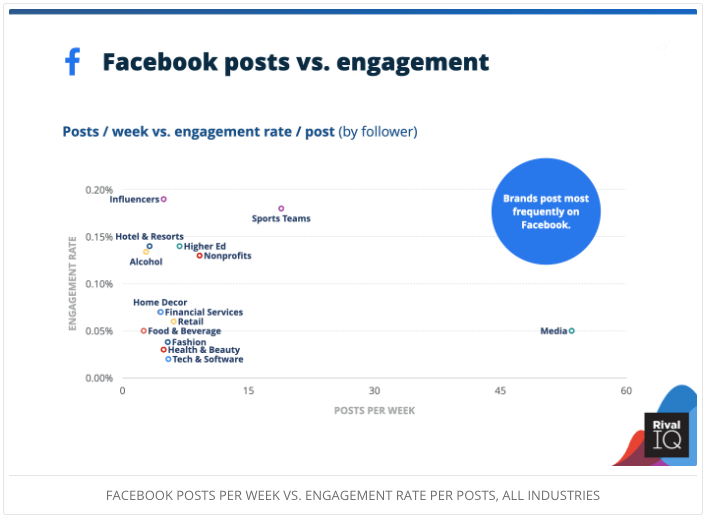
Instagram engagement rates
Engagement rates are significantly higher on Instagram compared to Facebook, but there tend to be fewer posts per day.
As might be expected, the Fashion sector has some of the highest engagement rates and post frequency.
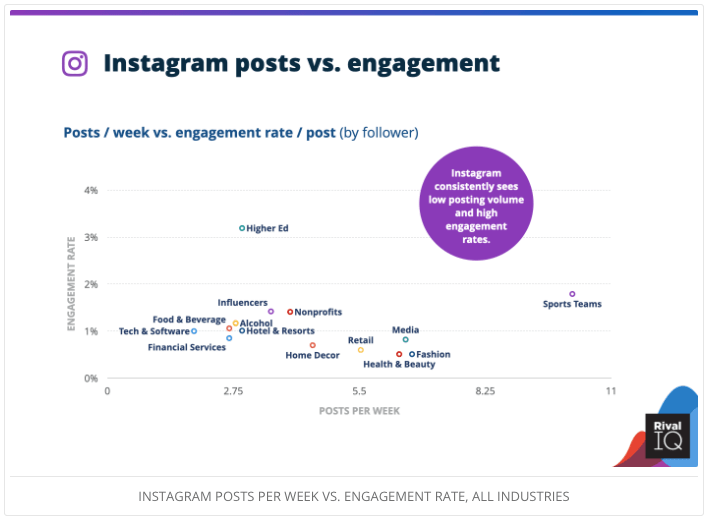
Social media statistics covered in this benchmark include Alcohol, Fashion, Food & Beverage, Health & Beauty, Higher Ed, Home Decor, Hotels & Resorts, Influencers, Media, Nonprofits, Retail and Sports Teams.
Q6. How do consumers interact with different post formats in social media?
Marketers know intuitively that the right type of visuals and videos are more effective in gaining engagement.
This is supported by observed interaction rates. According to LinkedIn, Images typically result in a 2x higher comment rate and Video gets 5x more engagement on LinkedIn, Live Video gets 24x more.
This is also supported by this data from this Social Bakers social media trends report:
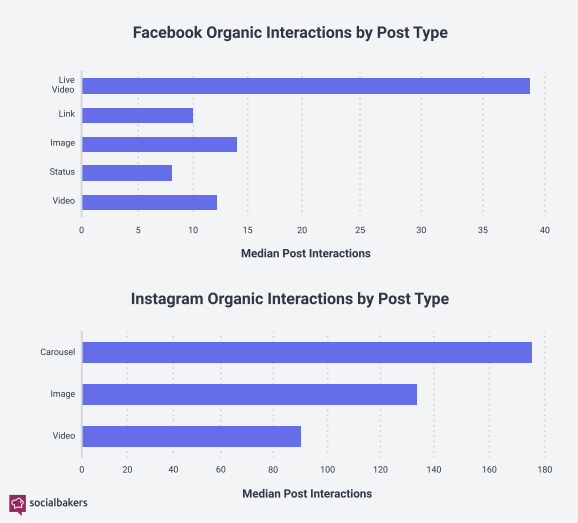
Videos longer than a minute achieved the highest median interactions and
median reach on Facebook, according to Socialbakers data.
In 2020, the median reach for very long videos (longer than five minutes)
was around 9,700, which was 44.8% more than long videos.
In fact, for both reach and interactions there was a correlation that showed
the longer a video was, the further it reached and the more interactions it
received.
Socialbakers’ metrics for video length are very short (less than 11.882
seconds), short (more than 11.882 and less than 24.362 seconds), medium
(more than 24.362 and less than 61.248 seconds), long (more than 61.248
seconds and less than five minutes), and very long (more than five
minutes).
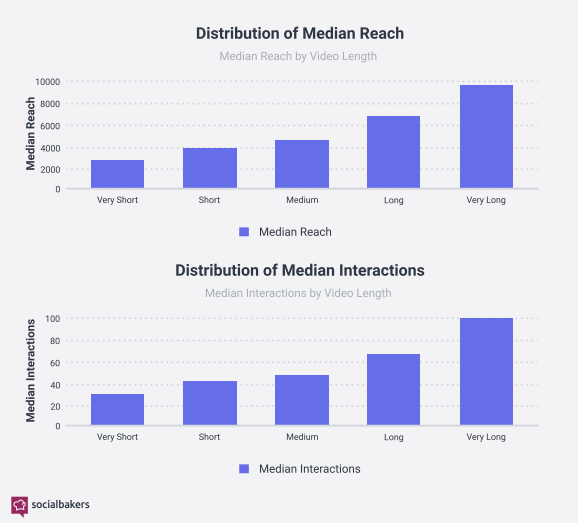
Q7. What are the most popular times for consumers to use social media suggesting the best times to post?
Testing different frequency of updates and timing is another aspect of social media optimization based on consumer behaviour.
Each network tends to have a ‘sweet spot’ for frequency based on their algorithms. It used to be beneficial to post several times a day on Facebook for many brands, but with decrease organic reach, a single update tends to be more effective. We find a higher frequency on LinkedIn or Twitter tends to be more effective.
Sprout Social also compares the best times to post on social media in different sectors as shown on these charts. Compare these to your patterns of posting and consider how you could post differently.
Each network tends to have a ‘sweet spot’ for frequency based on their algorithm and the most common times for consumer usage. It used to be beneficial to post several times a day on Facebook for many brands, but with decrease organic reach, a single update tends to be more effective. We find a higher frequency on LinkedIn or Twitter tends to be more effective. The results from Instagram and Facebook show a clear preference for around midweek at midday, so you should consider this when scheduling your post updates.
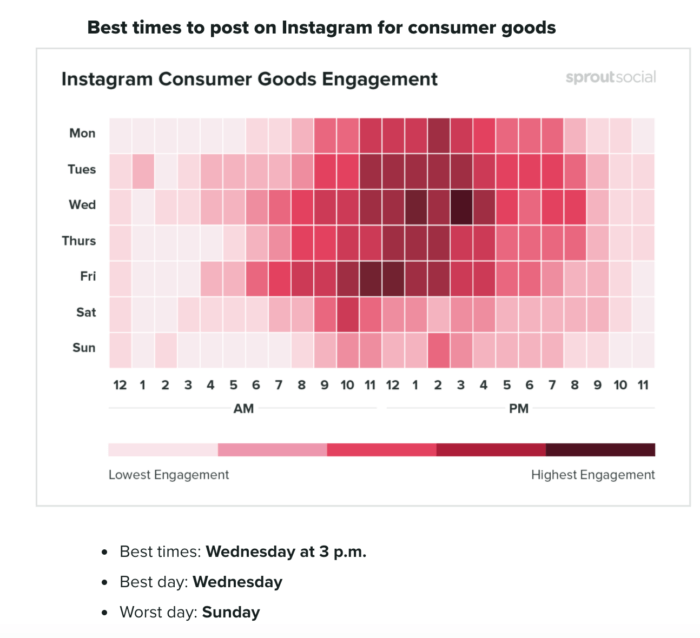 [“source=smartinsights”]
[“source=smartinsights”]


